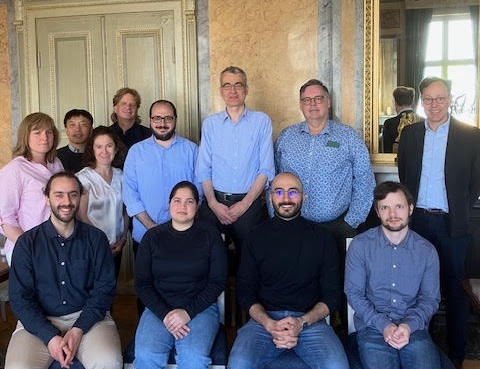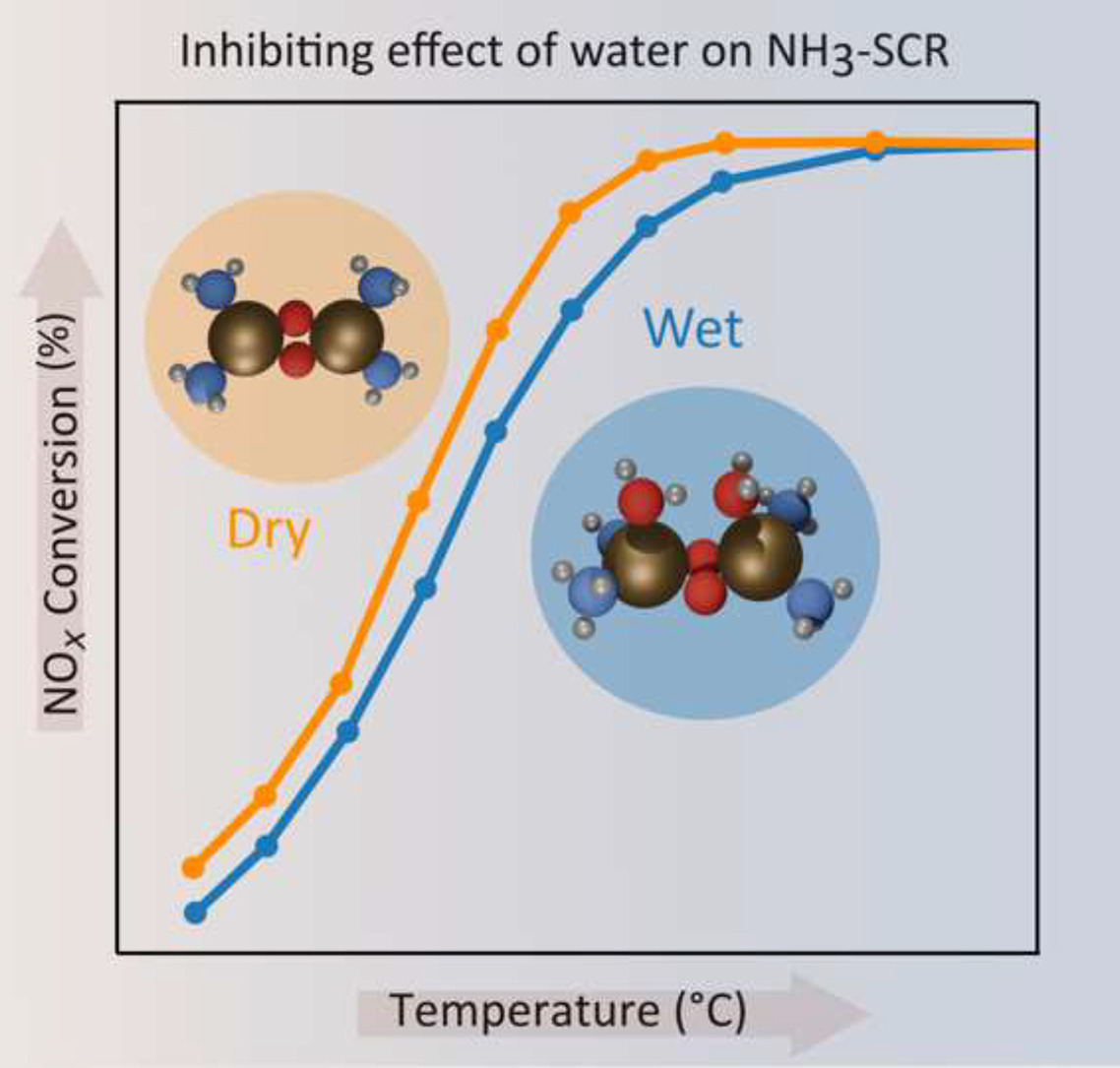Excited to share our study on the sulfur-induced deactivation of Cu-CHA during NH3-SCR conditions, by presenting a detailed mechanism based on first principle calculations.
Density Functional Theory (DFT) calculations are used to investigate low temperature SO2 deactivation of Cu-CHA during ammonia assisted selective catalytic reduction of NO (NH3-SCR). SO2 is found to adsorb on [Cu2II(NH3)4O2]2+ forming a copper sulfate complex. NO and NH3 react over the sulfate complex forming N2, H2O and H2SO4. H2SO4 undergoes an acid-base reaction with NH3 yielding SO4(NH4)2 and HSO4(NH4), where HSO4(NH4) is thermodynamically preferred during typical reaction conditions. The SO2-derived species are bulky and have considerable barriers for inter-cage diffusion. Moreover, the presence of HSO4(NH4) species reduces the probability of having two [CuI(NH3)2]+ complexes in one cage, which is a requirement for O2 activation. The results suggest that the key mechanism for low temperature SO2 deactivation is of physical origin and that the catalyst can be regenerated by exposure to high temperatures where HSO4(NH4) decomposes. The suggested mechanism agrees with experimental observations and provides atomistic understanding of sulfur poisoning of Cu-CHA during NH3-SCR.
Bjerregaard, Joachim D., Martin Votsmeier, and Henrik Grönbeck. “Mechanism for SO2 poisoning of Cu-CHA during low temperature NH3-SCR” Journal of Catalysis 417 (2023): 497-506.
All CHASS resources are open access. Check out and download the article from this link: https://www.sciencedirect.com/science/article/pii/S0021951722005255

